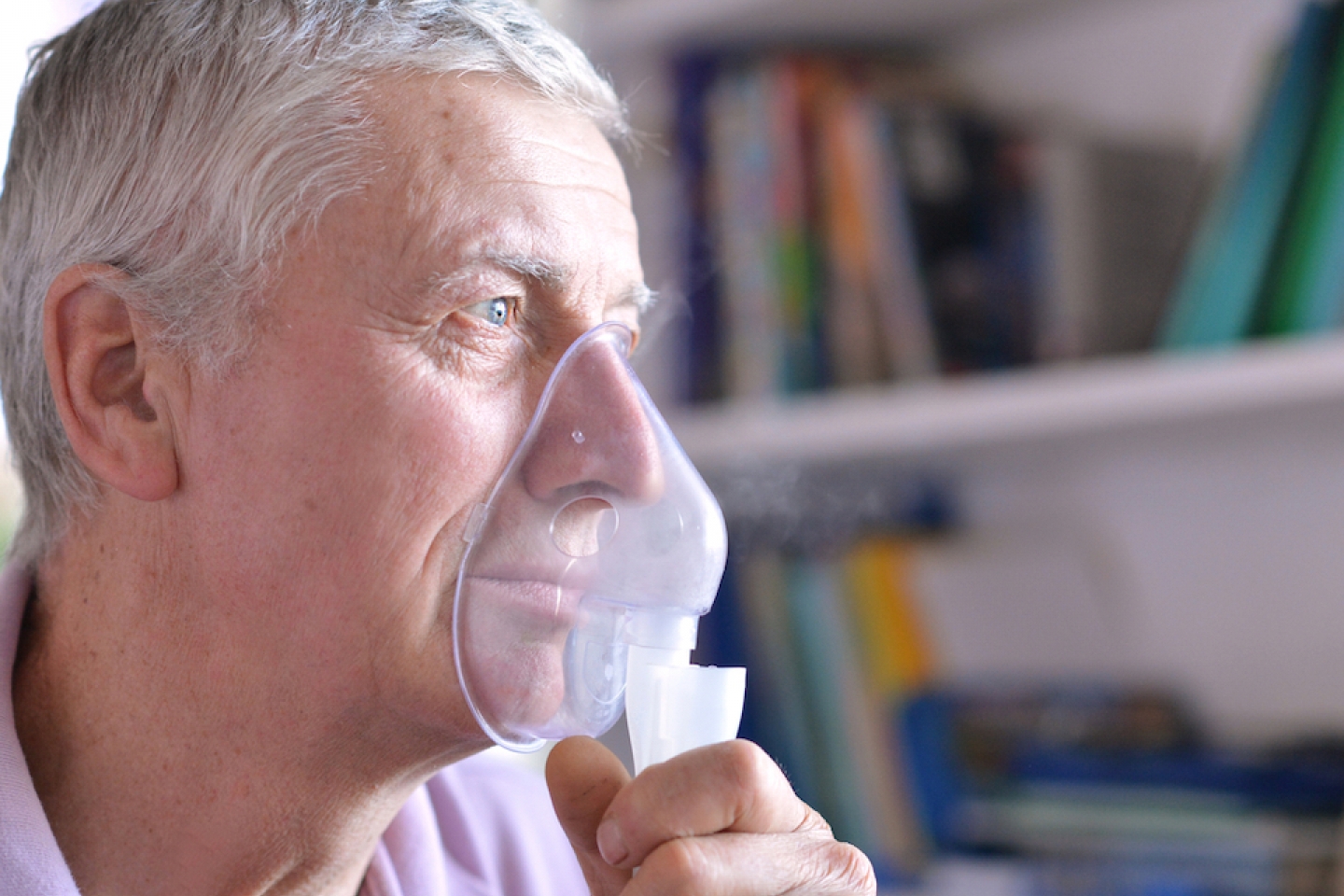
Having trouble breathing? Coughing more than usual? If you have previously smoked cigarettes or are currently smoking, then these symptoms could point to chronic obstructive pulmonary disease (COPD), a long-term lung disease that makes breathing difficult. Even if you have never smoked you may be at risk for COPD. Seeking early medical care can help you manage your symptoms and begin a treatment plan to improve your quality of life.
COPD refers to a group of diseases, including emphysema and chronic bronchitis, that cause lung damage and breathing-related problems. Approximately 16 million Americans live with COPD, yet millions more unknowingly have it. This includes those most at risk—smokers—who tend to attribute their respiratory problems to smoking instead of seeing a physician and receiving a formal diagnosis, says Michael Niederman M.D., a pulmonary and critical care specialist and Professor of Clinical Medicine. “If you’ve been a smoker, are coughing and producing phlegm, which are major signs of COPD, then you need to see your doctor to get tested,” Dr. Niederman says. “COPD is relatively common, and the earlier we can diagnose it, the earlier we can treat it.”
Although smoking is the main risk factor for COPD, not all smokers develop the disease. “Only 1 in 4 or 5 smokers gets measurable COPD,” Dr. Niederman says. “Even if you don’t get COPD there are many smoking-related health problems that you can get.”
It takes years of smoking and a significant loss of lung function for COPD symptoms to develop, which explains why patients tend to be older, says Jamuna Krishnan, M.D., a pulmonary/critical care specialist and COPD researcher. “A lot of our patients are between 60 and 70 and develop symptomatic COPD after several years of smoking,” Dr. Krishnan says. Other major risk factors for COPD include long-term exposure to environmental toxins, including air pollution, chemicals, dust, and fumes.
For several reasons, women face a greater risk than men for developing COPD. Smoking-related COPD is more prevalent in women, who are nearly 13 times as likely as women who have never smoked to die from it, compared with male smokers, who are nearly 12 times as likely as men who have never smoked to die from it.
Having smaller airways makes women more vulnerable than men to lung damage from cigarette smoke and other harmful environmental exposures. Such exposures include smoke from indoor wood-burning stoves, which women in developing countries commonly use to work and cook, Dr. Krishnan says. “Globally, women are at greater risk, especially those in developing countries who work in jobs that expose them to sources of environmental toxins,” Dr. Krishnan says.
Moreover, because COPD has traditionally been considered a ‘man’s disease,’ it is frequently missed or misdiagnosed in women, and detected at an advanced stage.
Treatments for COPD may include inhalation therapy, or pulmonary rehabilitation and education to help patients improve the efficiency of their lungs. At WCM, patients with certain types of COPD may qualify for a procedure known as bronchoscopic lung volume reduction. “It’s a revolutionary procedure in which we can effectively make areas of damaged lung smaller and allow more normal areas of lung to expand and be more functional,” Dr. Niederman says.
In some patients, viral or bacterial infections may exacerbate COPD symptoms. These episodes may respond to therapy with steroids or antibiotics, and not only help patients feel better but also slow down the loss of lung function that can accelerate during an exacerbation.
But COPD is preventable, and the single most effective way to avoid it is to quit or not start smoking. “COPD causes irreversible damage to the lungs,” Dr. Niederman says. “If a patient has lost lung function because of smoking, most of that’s not going to return but if they stop smoking, the rapid rate of decline slows with age to a more normal rate of decline.”
Avoiding exposure to secondhand smoke, chemicals, dust, and fumes can also prevent COPD. Immunization for potentially lung-damaging illnesses like pneumonia, influenza, and COVID-19 are also important preventative measures.
Whether or not you smoke, you should see a doctor if you have any of the following symptoms:
“Anyone who develops these symptoms shouldn’t take them lightly,” Dr. Krishnan says. “If you have new shortness of breath, then you should be evaluated. If you’re a smoker and have shortness of breath, then it’s possible you have COPD. Instead of coping with it on your own, you should seek medical help.”
You should also seek medical help if your symptoms worsen. “If your exacerbated symptoms are not treated, then you risk additional loss of lung function,” Dr. Niederman says. Most importantly, he adds, get an early diagnosis. “We can help people live longer and lead more productive lives if they’re diagnosed and treated early.”